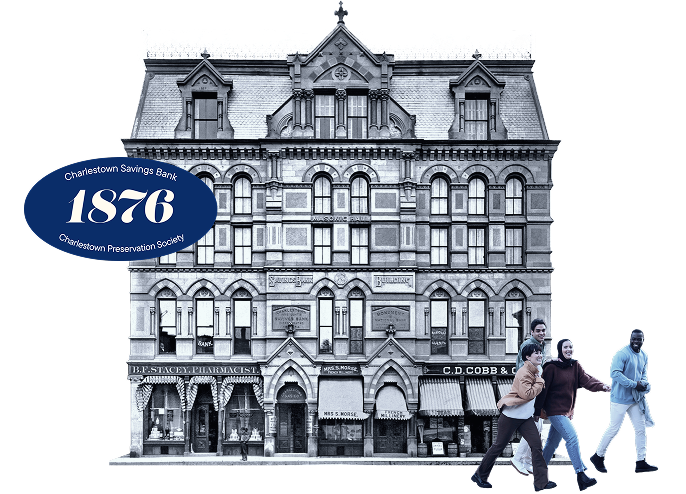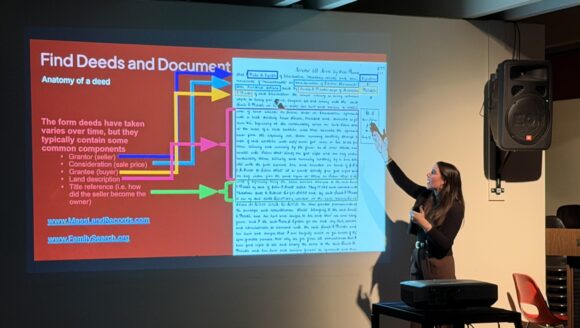Over the last few weeks, we hosted two sessions with neighbors interested in uncovering the history of their houses – from when they were built to who lived there and how they’ve changed over time. Here’s a quick overview of what was covered, with resources to help you start your own research.
Step 1: Find Out When Your House Was Built
Start with the Charlestown Historic Resource Study (1987): There are hard copies of the map in the Boston Public Library – Charlestown Branch, just ask for the “white binders.” More than 1,000 local buildings were documented, by the Massachusetts Historical Commission, and yours may be among them.Even if it is, keep digging to confirm and expand the details.
Maps and Atlases
Historic maps can reveal when your home first appeared and how the neighborhood developed.
- Sanborn and Bromley Fire Maps: at the Charlestown Branch Library or Leventhal Map Center
- Atlases: Atlascope (1868–1922)
Compare maps from different years, if your home appears on an 1871 map but not 1868, it was likely built between those dates.
Property Documents
Trace ownership through deeds and titles using:
- Massachusetts Land Records (Suffolk County)
- FamilySearch.org (free upon account creation) for older Middlesex and Suffolk County deeds
Tax records, available through the City of Boston Archives can also show changes in ownership or major renovations. Note that tax books are available by appointment only.
Building Permits
Historic permits and plans may be available through Boston’s Inspectional Services Department.
Architectural Clues
Your home’s design and materials can offer hints:
- Square-head nails and short clapboards suggest 1700s–early 1800s
- Flat roofs and milled lumber often indicate post-1850 construction
Step 2: Explore Who Lived There
Once you know when your home was built, look into its residents and stories.
City Directories & Census Records
Town directories (1831–1874) and census data on Ancestry.com or FamilySearch.org show names, occupations, and household details.
Newspapers
Old Charlestown papers – such as the Bunker-Hill Aurora, Charlestown Advertiser, and Charlestown Enterprise – include property sales and neighborhood news. Many are digitized through the Digital Commonwealth.
Neighbors & Local History
Longtime residents can offer stories or photos. Local history books like Old Charlestown (1902) or A Century of Town Life (1888) also capture early neighborhood details.
Step 3: Pull It All Together
Create a simple timeline of your findings: build date, owners, and major alterations, and note your sources. Cross-check details between maps, deeds, and directories for accuracy. You can track the information you find using this research template.
If you hit a dead end, especially for pre-1874 homes, the Charlestown Preservation Society can help guide deeper research. And if you’re interested in using your research for a Historic Marker, applications are open on a rolling basis until July 1.
Contact Us
Interested in learning about the history of Charlestown, or getting involved? We'd love to hear from you!

